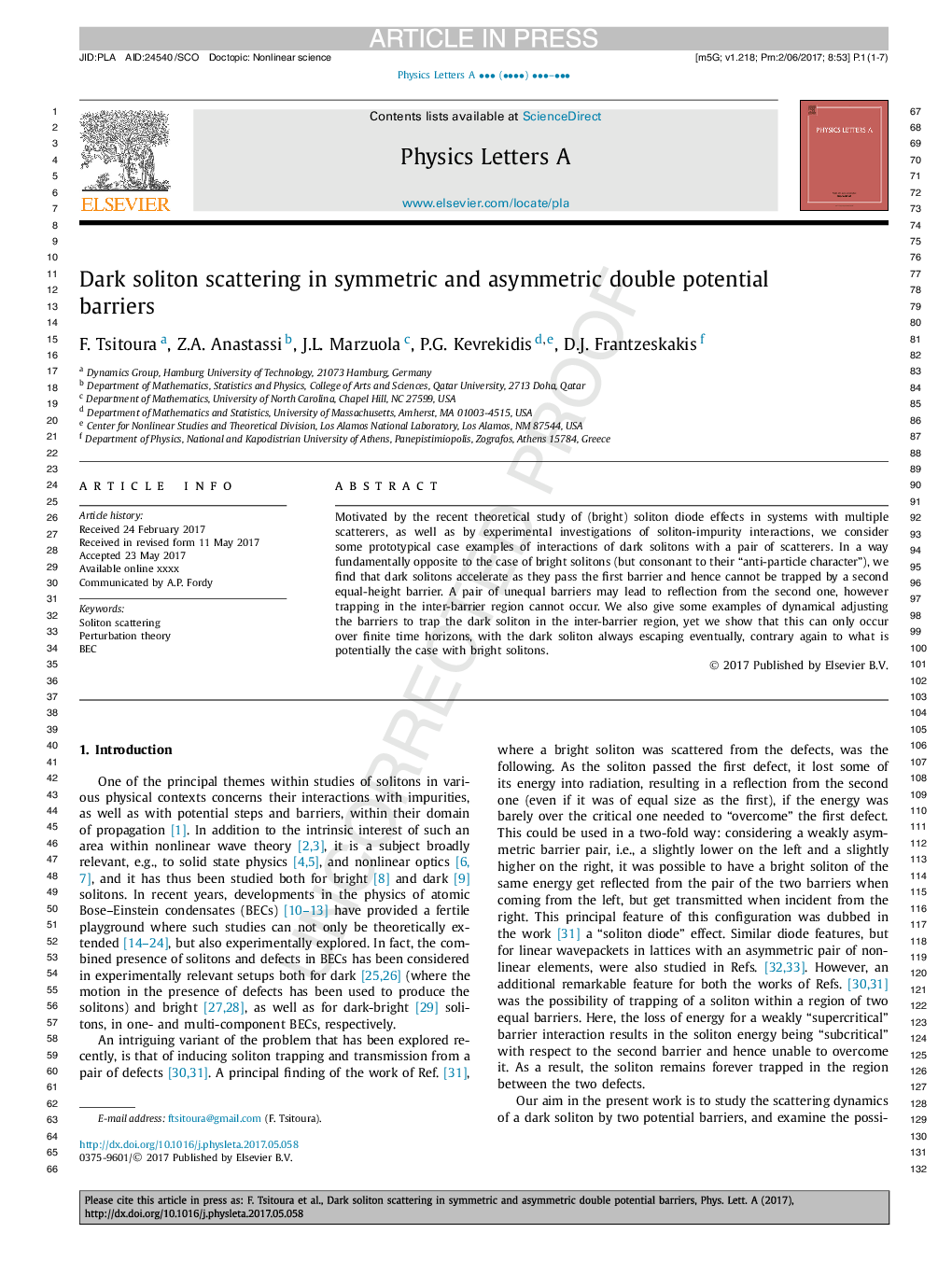| Article ID | Journal | Published Year | Pages | File Type |
|---|---|---|---|---|
| 5496205 | Physics Letters A | 2017 | 7 Pages |
Abstract
Motivated by the recent theoretical study of (bright) soliton diode effects in systems with multiple scatterers, as well as by experimental investigations of soliton-impurity interactions, we consider some prototypical case examples of interactions of dark solitons with a pair of scatterers. In a way fundamentally opposite to the case of bright solitons (but consonant to their “anti-particle character”), we find that dark solitons accelerate as they pass the first barrier and hence cannot be trapped by a second equal-height barrier. A pair of unequal barriers may lead to reflection from the second one, however trapping in the inter-barrier region cannot occur. We also give some examples of dynamical adjusting of the barriers to trap the dark soliton in the inter-barrier region, yet we show that this can only occur over finite time horizons, with the dark soliton always escaping eventually, contrary again to what is potentially the case with bright solitons.
Keywords
Related Topics
Physical Sciences and Engineering
Physics and Astronomy
Physics and Astronomy (General)
Authors
F. Tsitoura, Z.A. Anastassi, J.L. Marzuola, P.G. Kevrekidis, D.J. Frantzeskakis,
